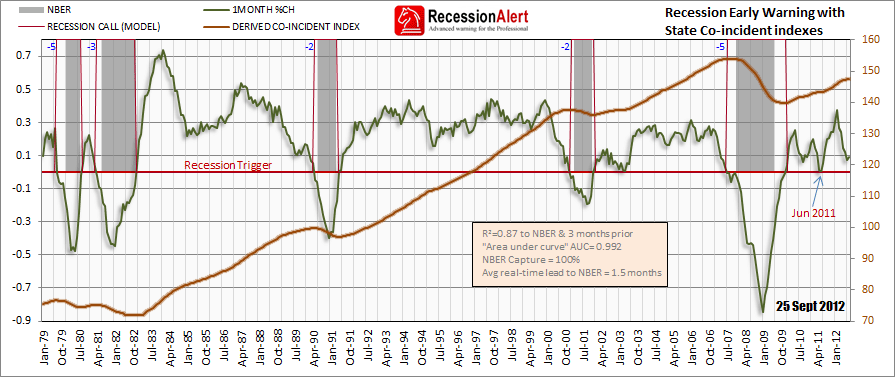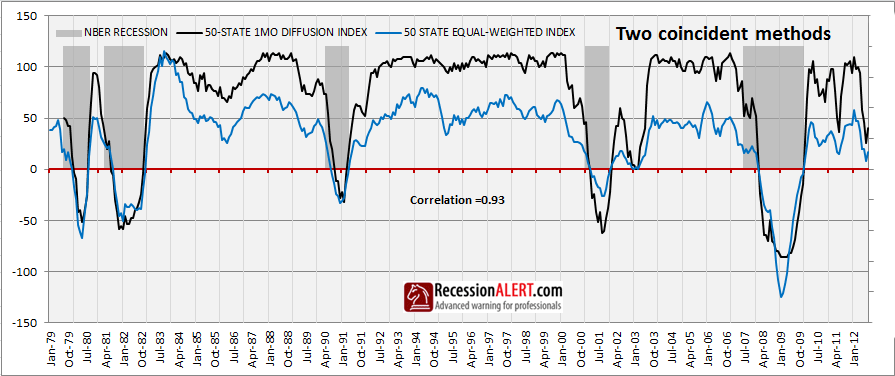A while back we published an interesting project (Predicting US Recessions with State co-incident data) to see if we could get some advance recession warning from the co-incident indices of the 50 US states. We built a composite economic index of 50 U.S states as published by the Philadelphia Federal Reserve, combined in a positively-weighted index (CEI) that is statistically regressed with NBER & 3-months prior dates (hence the “leading” characteristics of the composite.)
It aims to give 3 months advance warning of a recession . It does a very decent job of this (2 to 5 months, or avg=3.5 months warning) but given the index inputs are 1 month post and the data is published by the Philly fed toward the end of the month, this gives the real-time observer a 2 month lag on published coincident data and thus the look-ahead model only gives 1.5 months real-time (average) advance warning of recession. But the advantage is that 1.5 months average lead is better than the 2 month lag using the co-incident indices in the normal diffusion index methodology favored by the Philly Fed.
Although the weighted index consists of positive weightings of all 50 US states’ coincident economic indices, the index is dominated 99% by 12 of the 50 U.S states, namely : KY 27.7% , RI 13.7%, MT 13.7%, MA 11.9%, FL 11.7%, MN 7.0%, HI 4.9%, SC 2.9% , TN 2.8%, ME 1.9%, IN 0.9% and IA 0.3%. These are the states that seem to react earlier to signs of recession than the others and hence give us the advance warning (or so the theory goes!)
The chart of this weighted composite index is shown below updated as per the Philly Fed update on 25th Sept 2012. A big scare in Aug 2011 (data is lagged 2 months) and again in August 2012, but the index seems to be pointing up again with the latest data:

It is remarkable that the 12 U.S states making up the weighting of the above “Canaries in the coalmine” index results in a better than 96% correlation to an equally-weighted 50-state index where each state contributes 2% weighting. This is shown below where you can see the green line representing the 12 states, clearly responding to economic stress leading to recession earlier than the 50-state equally weighted index. It is interesting to note that both indexes are now clearly in perfect lockstep since January 2012.

It is worth pointing out that the 50-state equally weighted index shown above is nearly identical to the 50-state 1-month diffusion index published by Philadelphia Fed when it comes to recession dating. The two indexes measure different things and have very different shapes, but result in near identical co-incident turning point signalling when configured for zero false-positive triggers about zero as shown below. Their co-movements are correlated by 93% despite their different looking shapes. The equal weighted index seemed to do a better job with the 1990’s recession though.

Whichever of the 3 methods we look at – the 12 early warning states, the equal-weighted 50-state or the 50-state diffusion of the Philly Fed – none of them currently show recession conditions. Vulnerable and struggling economy yes – but no recession – yet.

Comments are closed.